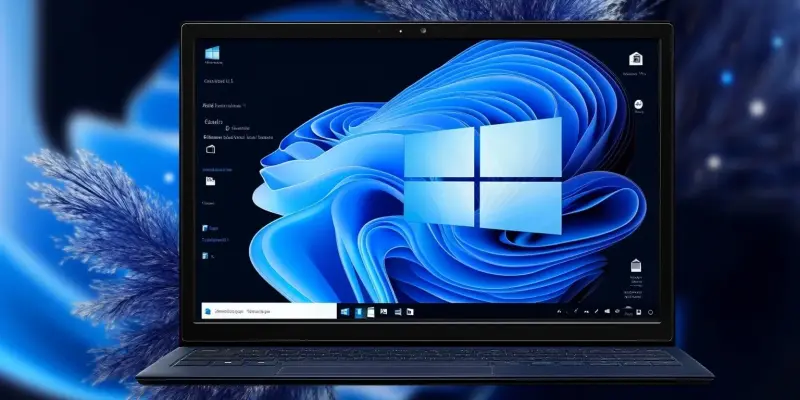The recently released Windows 11 KB5050094 update has quickly become a hot topic in the tech community, stirring up both interest and concern among users. While this optional update aimed to resolve several persistent issues, especially the notable DAC audio bug, it seems to have introduced a series of new problems that may outweigh the benefits it brings. As users report a myriad of issues following its installation, it prompts a crucial question: is this update more trouble than it’s worth?
The Cursor Conundrum
Erratic Cursor Behavior
One of the most glaring issues with the Windows 11 KB5050094 update is the erratic cursor behavior experienced by many users. Post-update, the cursor begins showing a spinning circle every 30 seconds, even when the system is idle, creating an illusion of continuous background activity. This anomaly doesn’t just stop there; it leads to additional complications when it comes to text editing. Users have reported that the cursor frequently disappears in text fields, rendering text input tasks frustrating and inefficient. This problem is particularly noticeable in light mode, where the glitch appears more frequently and severely impacts everyday tasks.
Impact on User Experience
The cursor’s misbehavior extends beyond mere annoyance; it significantly disrupts productivity. For professionals relying on precise and uninterrupted text input, including writers, coders, and data entry personnel, the disappearing cursor can lead to repeated typing errors and substantial delays in completing tasks. Moreover, the incessant appearance of the spinning circle distracts users, breaking their concentration and workflow. Users have taken to forums and social media to voice their grievances, stressing how this seemingly minor issue drastically impacts their overall user experience. The dissatisfaction has prompted discussions about the necessity of immediate patches or a rollback of the update until the bugs are thoroughly addressed.
File Explorer Failures
Unresponsiveness and Crashes
Another significant problem introduced by the KB5050094 update is the compromised functionality of File Explorer. Users have documented numerous instances where File Explorer becomes entirely unresponsive or fails to open altogether, alongside critical dialogs like Save As, Open, and Browse. This glitch is not restricted to a few cases but appears to be widespread, affecting multiple systems post-update. The degradation in performance is particularly pronounced during login, where the system demonstrates notable sluggishness and unresponsiveness, delaying user interaction significantly.
Widespread Impact
The unreliability of File Explorer post-update has had far-reaching effects, impacting users across various professional and personal settings. For individuals who rely on swift file navigation and management, these crashes mean work interruptions and potential data loss when unsaved files cannot be properly managed. In corporate environments, where efficiency and reliability are paramount, the sporadic failures of fundamental functionalities like File Explorer can result in considerable downtime and productivity losses. The escalating number of user reports underscores the gravity of the issue and highlights the urgent need for Microsoft to prioritize fixing these critical bugs.
Additional Problems
Device and System Issues
Beyond the cursor and File Explorer malfunctions, users have reported a plethora of additional issues that significantly degrade the overall user experience. Among them is the mysterious disappearance of audio devices when utilizing specific applications such as Kodi. This problem inevitably hinders media consumption and professional audio work. Additionally, the update has given rise to recurrent installation loops marked by error 0x80070302, particularly affecting ARM system users. These endless loops of the installation process not only waste time but also cause significant frustration and potential system instability.
System Performance and Compatibility
The update has also introduced complications related to system performance and compatibility. Users have encountered failures of Hyper-V during Remote Desktop Protocol (RDP) sessions, which are crucial for IT professionals managing remote servers and virtual machines. Elevated idle RAM usage and increased CPU/GPU temperatures have also been noted, suggesting the update may be causing inefficient resource management. These performance hiccups can lead to slower system operations, reduced hardware lifespan, and a generally poor computing experience. Collectively, these issues create a compounded negative impact on system reliability and usability.
Recommendations and Caution
Wait for the February 2025 Patch
Considering the assortment of significant flaws brought about by the KB5050094 update, users are widely advised to abstain from installing this optional update. The focus should be on anticipating the February 2025 Patch Tuesday release, which is expected to include the critical audio bug fixes without introducing the raft of new issues synonymous with the January update. While there is a cautious optimism that the February update will rectify these problems, users are also urged to approach it with a degree of skepticism. There is a potential risk that some bugs from KB5050094 may persist, meaning careful consideration and subsequent validation post-release becomes imperative.
Importance of Comprehensive Testing
The recently released Windows 11 KB5050094 update has rapidly become a focal point in the tech community, sparking both interest and apprehension among users. This optional update was intended to address several ongoing issues, most notably the persistent DAC audio bug. However, rather than being a flawless fix, it appears to have introduced a host of new problems that could potentially outweigh the benefits it aims to deliver. As users sound the alarm over various complications emerging post-installation, it raises an essential question: is this update more problematic than valuable?
Some of the reported problems include system crashes, unexpected slowdowns, and issues with certain applications no longer functioning as they should. Such problems have led to frustration among users who had hoped for improvements and stability. Now, they’re left wondering if they should have skipped the update altogether. The update’s unintended consequences have brought it under scrutiny, with discussions intensifying over whether Microsoft’s quality control processes need reinforcement to prevent such disruptions in future updates.

